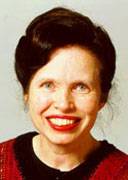|

Michael Wierzbicki, Ph.D.
michael.wierzbicki@marquette.edu
(414) 288-7560
Dr. Wierzbicki is interested in the cognitive-behavioral model of depression. Most recently, he has examined the cognitive and behavioral skills that people use to cope with daily stressors, including how such factors as cognitive flexibility, personality, and religious coping affect coping.
He is a film buff and an avid fan of the Milwaukee Brewers. He also is ranked as a National Master in chess and a Life Master in contract bridge.
Expand all | Collapse all
Dr. Wierzbicki taught undergraduate abnormal psychology, graduate abnormal psychology, and graduate courses in assessment.
Depression, the empirical examination of clinical methods, cognitive-behavioral treatment, depression in adults, assumptions of clinical psychology, the scientist-practitioner training model, faking on the MCMI, psychopathology in adoptees, patient dropout in psychotherapy.
- Kuchan, A. M., Wierzbicki, M., & Siderits, M. A. (2013). Psychological characteristics of applicants to the Jesuit Order. Pastoral Psychology, 62(3), 319-331.
- Driscoll, M. W., & Wierzbicki, M. J. (2012). Predicting reasons for experiencing depression in Pakistani and Palestinian Muslims: The roles of acculturation and religiousness. Journal of Muslim Mental Health, 6, 39-61.
- Wierzbicki, M., Siderits, M. A., & Kuchan, A. M. (2012). Ethical questions addressed by a state psychological association. Professional Psychology: Research and Practice, 43, 80-85.
- Wierzbicki, M., & Tyson, C. M. (2007). A summary of evaluations for learning and attention problems at a university training clinic. Journal of Postsecondary Education and Disability, 20, 16-27.
|
|
 Stephen L. Franzoi, Ph.D. Stephen L. Franzoi, Ph.D.
stephen.franzoi@marquette.edu
(414) 288-1650
Dr. Franzoi has retired as a regular faculty member and is now Professor Emeritus. He received his doctorate in social psychology from the University of California at Davis and was a postdoctoral fellow in the Self Program at Indiana University prior to joining Marquette’s faculty. Over the years, Dr. Franzoi served as assistant editor of Social Psychology Quarterly and associate editor of Social Problems, and discussed his self-awareness and body esteem research in such media outlets as The New York Times, USA Today, National Public Radio, and the Oprah Winfrey Show. In his retirement, he still loves writing and teaching about psychology, but also enjoys relaxing with his family, serving as a Reiki therapist for cancer patients, bicycling, and making wine.
Body esteem and physical appearance, behavioral implications of self-awareness and self-consciousness. View Dr. Franzoi's Body Esteem Scale-Revised (updated 2017).
- Franzoi, S. L. (2018). Psychology. 6th edition. Redding, CA: BVT Publishing.
- Franzoi, S. L. (2018). Essentials of Psychology. 6th edition. Redding, CA: BVT Publishing.
- Frost, K. A., Franzoi, S. L., Oswald, D. L., & Shields, S. A. (2017). Revising the Body Esteem Scale with a U.S. college student sample: Evaluation, validation, and uses for the BES-R. Sex Roles.
- Franzoi, S. L. (2017). Body Esteem Scale. In V. Zeigler-Hill & T. Shackelford (Eds.). Encyclopedia of Personality and Individual Differences. pp. 1-4. Springer Publishing.
- Franzoi, S. L. (2016). Social Psychology. 7th edition. Redding,CA: BVT Publishing.
- Franzoi, S. L., Vasquez, K., Sparapani, E., Frost, K., Martin, J., & Aebly, M. (2012). Exploring body comparison tendencies: Women are self-critical whereas men are self-hopeful. Psychology of Women Quarterly, 36, 99-109.
- Oswald, D. L., Franzoi, S. L., & Frost. K. A. (2012). Experiencing sexism and young women's body esteem. Journal of Social and Clinical Psychology, 31, 1112-1137.
- Franzoi, S.L. (2011). Psychology: A Discovery Experience. 1st edition. Mason, OH: South-Western Publishing.
- Franzoi, S.L. (2009). Psychology: A Journey of Discovery. 4th edition. Mason, OH: Atomic Dog/Cengage Learning.
- Franzoi, S.L. (2009). Social Psychology. 5th edition. New York: McGraw-Hill.
- Franzoi, S.L. (2007). Psicología Social. 4th edition. (trans. J. A. V. Arellano, M.E. O. Salinas, J. A. R. Sandoval, & S. P. Becerril). Mexico: McGraw-Hill.
- Franzoi, S.L., & Klaiber, J. R. (2007). Body use and reference group impact. Sex Roles, 55, 205-214.
- Franzoi, S.L., & Davis, M. H. (2005). Self-awareness and self-consciousness. In V. Derlega, B. Winstead, & W. Jones (Eds.), Personality: Contemporary theory and research. pp. 281-308. 3rd edition. Belmont, CA: Thomson Wadsworth.
- Franzoi, S.L., & Chang, Z. (2002). The body esteem of Hmong and Caucasian young adults. Psychology of Women Quarterly, 26, 89-91.
- Franzoi, S.L. (2001). Is female body esteem shaped by benevolent sexism? Sex Roles, 44, 177-188.
- Franzoi, S.L., & Chang, Z. (2000). The sociocultural dynamics of the physical self: How does gender shape body esteem? In J. A. Holstein & G. Miller (Eds.), Perspectives on social problems, Vol. 12, pp. 179-201. Stamford, CT: JAI Press.
- Franzoi, S.L., & Koehler, V. (1998). Age and gender differences in body attitudes: A comparison of young and elderly adults. International Journal of Aging and Human Development, 47, 1-10.
- Franzoi, S.L. (1995). The body-as-object versus the body-as-process: Gender differences and gender considerations. Sex Roles, 33, 417-437.
- Franzoi, S.L., Davis, M. H., & Vasquez-Suson, K. A. (1994). Two social worlds: Social correlates and stability of adolescent status groups. Journal of Personality and Social Psychology, 67, 462-473.
- Franzoi, S.L. (1994). Further evidence of the reliability and validity of the body esteem scale. Journal of Clinical Psychology, 50, 237-239.
- Davis, M. H., & Franzoi, S.L. (1991). Stability and change in adolescent self-consciousness and empathy. Journal of Research in Personality, 25, 70-87.
- Franzoi, S.L., Davis, M. H., & Markwiese, B. (1990). A motivational explanation of private self-consciousness differences. Journal of Personality, 58, 641-659.
- Franzoi, S.L., Kessenich, J. J., & Sugrue, P. A. (1989). Gender differences in the experience of body awareness: An experiential sampling study. Sex Roles, 21, 499-415.
- Burke, P. J., & Franzoi, S.L. (1988). Studying situations and identities using experiential sampling methodology. American Sociological Review, 53, 559-568.
- Franzoi, S.L., & Herzog, M. G. (1987). Judging physical attractiveness: What body aspects do we use? Personality and Social Psychology Bulletin, 134, 19-33.
- Davis, M. H., & Franzoi, S.L. (1986). Adolescent loneliness, self-disclosure, and private self-consciousness: A longitudinal investigation. Journal of Personality and Social Psychology, 51, 595-608.
- Franzoi, S.L., & Sweeney, P. D. (1986). Another look at the relation between private self-consciousness and self-attribution. Journal of Research in Personality, 20, 187-206.
- Franzoi, S.L., & Herzog, M. E. (1986). The Body Esteem Scale: A convergent and discriminant validity study. Journal of Personality Assessment, 50, 24-31.
- Franzoi, S.L., Davis, M. H., & Young, R. D. (1985). The effects of private self-consciousness and perspective-taking on satisfaction in close relationships. Journal of Personality and Social Psychology, 48, 1584-1594.
- Franzoi, S.L., & Davis, M. H. (1985). Adolescent self-disclosure and loneliness: private self-consciousness and parental influences. Journal of Personality and Social Psychology, 48, 768-780.
- Franzoi, S.L., & Brewer, L. C. (1984). The experience of self-awareness and its relation to level of self-consciousness: An experiential sampling study. Journal of Research in Personality, 18, 522-540.
- Franzoi, S.L., & Shields, S. A. (1984). The body esteem scale: Multidimensional structure and sex differences in a college population. Journal of Personality Assessment, 48, 173-178.
- Franzoi, S.L. (1983). Self-concept differences as a function of private self-consciousness and social anxiety. Journal of Research in Personality, 17, 275-287.
|
|
 Anees Sheikh, Ph.D. Anees Sheikh, Ph.D.
anees.sheikh@marquette.edu
(414) 288-7471
Dr. Sheikh taught the Psychology of Imagination, Death and Dying, Psychology of Happiness, an undergraduate course in psychotherapy methods, and the graduate course in clinical uses of mental imagery.
Dr. Sheikh taught the Psychology of Imagination, Death and Dying, Psychology of Happiness, an undergraduate course in psychotherapy methods, and the graduate course in clinical uses of mental imagery.
Currently, I am mainly interested in the clinical and educational uses of mental imagery. Also, transpersonal issues, where the boundaries of psychology and spirituality meet, are of interest to me. I plan to pursue my inquiries into these areas.
- Kunzendorf, R., and Sheikh, A.A. (2010) Mental Imagery. In I.B. Weiner, W.E. Craighead. (Eds.), Corsini Encyclopedia of Psychology. New York: Wiley.
- Pincus, D., and Sheikh, A.A. (2009). Imagery for Pain Relief: A Scientifically Grounded Guidebook for Clinicians. New York: Routledge.
- Sheikh, A.A. (Eds.) (2003). Healing Images: The Role of Imagination in Health. Amityville, New York: Baywood.
- Sheik, A.A. (Eds.) (2002). Handbook of Therapeutic Imagery Techniques. Amityville, New York: Baywood.
- Sheikh, A.A., and Jordan, C.S. Eidetic psychotherapy. In R.J. Corsini (Ed.), Handbook of Innovative Therapy. New York: Wiley, 2001.
- Sheikh, A.A., and Sheikh, K.S. (Eds.). (1996). Healing East and West. New York: Wiley.
- Sheikh, A.A. and K.S. Sheikh (Eds.), Death Imagery: Confronting Death Brings Us To The Threshold of Life. American Imagery Institute, 1991.
- Sheikh, A.A., and Sheikh, K.S. Death before life: Therapeutic potential of death imagery. In A.A. Sheikh and K.S. Sheikh (Eds.). Death Imagery. American Imagery Institute, 1991.
- Ramaswami, S. and Sheikh, A.A. Meditation: East and West. In A.A. Sheikh and K.S. Sheikh (Eds.), Eastern and Western Approaches to Healing. New York: Wiley, 1989.
- Sheikh, A.A., Kunzendorf, R.G., and Sheikh, K.S. Healing images: From ancient wisdom to modern science. In A.A. Sheikh and K.S. Sheikh (Eds.), Eastern and Western Approaches to Healing. New York: Wiley, 1989.
- Sheikh, A.A., Sheikh, K.S., and Moleski, L. Enhancement in imaging ability. Chapter in A.A. Sheikh and K.S. Sheikh (Eds.), Imagery in Education. New York: Baywood, 1985.
- Sheikh, A.A., and Kunzendorf, R. Imagery, physiology, and psychosomatic illness. Chapter in A.A. Sheikh (Ed.), International Review of Mental Imagery. New York: Human Sciences Press, 1984.
- McMahon, C., and Sheikh, A.A. Imagination in disease and healing processes. Chapter in A.A. Sheikh (Ed.), Imagination and Healing. Amityville, New York: Baywood, 1984.
- Sheikh, A.A. (Ed.), Imagery: Current Theory, Research and Application. New York: John Wiley and Sons, 1983.
|
|
 Mary Anne Siderits, Ph.D. Mary Anne Siderits, Ph.D.
maryanne.siderits@marquette.edu
(414) 288-7391
Dr. Siderits has an incurable penchant for research pursuits that take years to complete (cf. Siderits, M. A., Johannsen, W. J., and Fadden, T. F. (1985). Gender, role and power: A content analysis of speech. Psychology of Women Quarterly 9 (4), 439-450.). She, therefore, openly warns students that she is in that respect a most unwholesome model. Working with an unusual format can have its own excitement, however, and she is now extending the work on role effects to an examination of gender differences in impairment of listening capacity under conditions of bilateral negotiation vs. group decision making.
The courses Dr. Siderits taught at Marquette include the psychology of gender roles, the psychology of religion, ethics and professional issues in clinical psychology, and various offerings in the clinical curriculum.
Gender, the psychology of religion, children's issues
- Siderits, M. A. (1973). Selves selving: The development of a sense of self-determination. Philosophical Studies, XXI, 57-69.
- McCall, R. J., & Siderits, M. A. (1974). Group therapy with obese women of varying MMPI profiles. Journal of Clinical Psychology, XXX, 466-470.
- Siderits, M. A. (1975). Person vs. pigeonmonger: The variable of counteraction. Philosophical Studies: XXIII,188-197.
- Siderits, M. A. (1978). We called the chessboard white: Shifts in religious and psychological values and their impact upon sexual counseling. Counseling and Values, 22(3), 140-150.
- Siderits, M. A. (1981). Rehearsal in reverie: Dream exploration as the equivalent of play. Journal of Phenomenological Psychology, 12 (1), 87-105.
- Siderits, M. A., Johannsen, W. J., & Fadden, T. F. (1985) Gender, role, and power: A content analysis of speech. Psychology of Women Quarterly, 9, 439-450.
- Siderits, M. A. (1991). Ethics in psychology courses. In R. B. Ashmore & W. C. Starr (Eds.), Ethics across the curriculum: The Marquette experience, Milwaukee, Marquette University Press.
- Siderits, M. A. (1996). A center for empowerment. The Humanistic Psychologist, 24,325-330.
- Siderits, M. A. (2002). Introducing traditional students to individualized assessment:The biocontextualist Rorschach with lessons from dreamwork. The Humanistic Psychologist, 30, 23-32.
- Gavin, E.A., Clamar, A., & Siderits, M.A.(Eds.)(2007). Women of vision: Their psychology, circumstances, and success. New York: Springer Publishing.
- Siderits, M.A. (2008). Journeying in twilight: Agnosticism and spirituality. In C.A. Rayburn & L. Comas-Diaz, WomanSoul: The inner life of women’s spirituality. Westport CN: Praeger.
- Siderits, M.A. (in press). Entry on Margaret Mead and psychology of creativity, Encyclopedia of Creativity. Elsevier: Oxford (scheduled to be published in 2011)
|